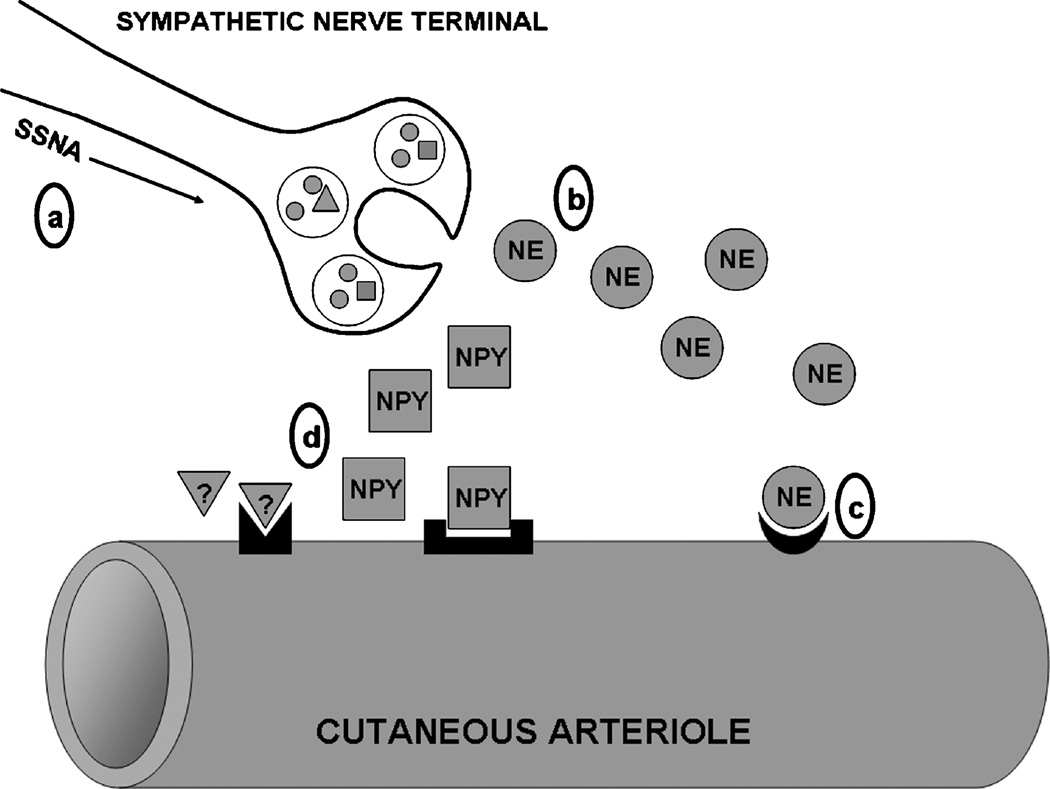Figure 1.
Schematic representation of sites of age-associated impairment in the sympathetic reflex thermoregulatory vasoconstriction (VC) response to cold. Efferent skin sympathetic nerve activity (SSNA) is reduced (a), resulting in decreased perivascular nerve stimulation and attenuated norepinephrine (NE) release (b). End-organ adrenoceptor-mediated VC is reduced because of a decrease in both NE sensitivity and maximal response in aged vessels (c). Sympathetic cotransmitter contributions (NPY indicates neuropeptide Y; question mark, other putative unidentified cotransmitters) to VC are abolished in aged skin (d), although it is unclear whether this is due to changes in transmitter synthesis/release, receptor expression, or vascular intracellular signaling.

